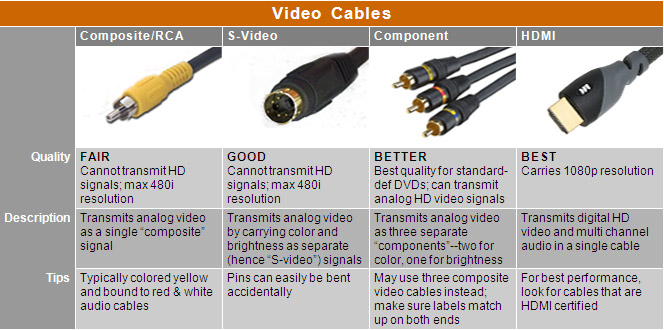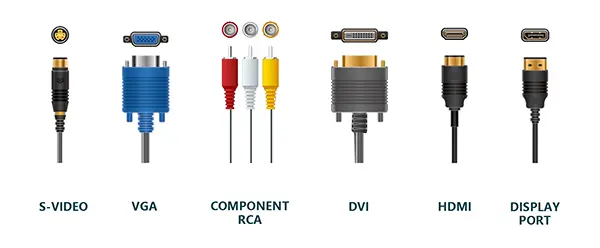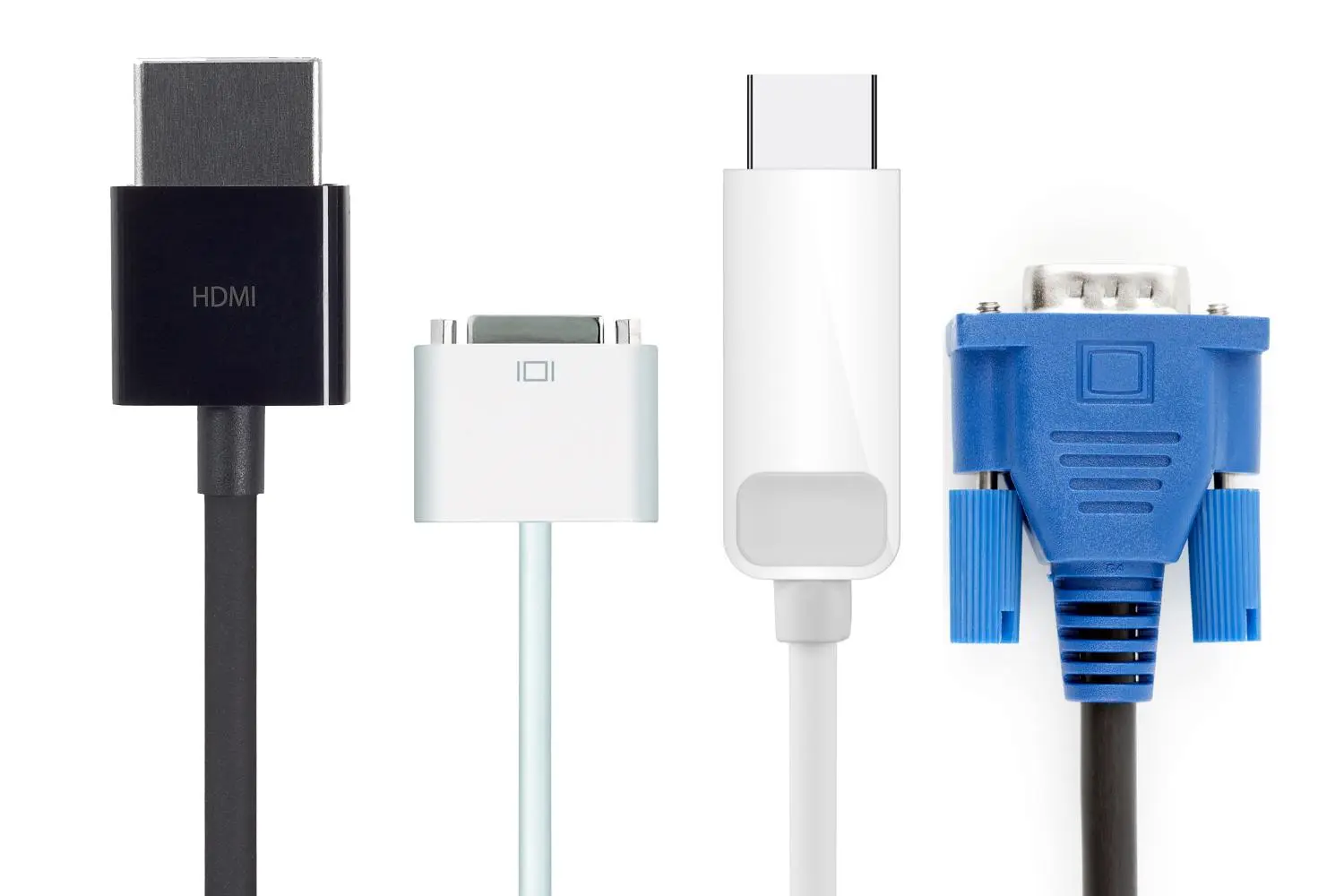High-Definition Showdown: HDMI vs. Traditional Audio/Video Cables

In the realm of modern technology, the significance of high-definition video and audio signals cannot be overstated. As the demand for crystal-clear visuals and immersive sound experiences continues to soar, the choice between HDMI and traditional audio/video cables becomes paramount. While HDMI represents the pinnacle of digital connectivity, traditional cables linger as a reminder of past standards. Today, we embark on a journey to unravel the mysteries surrounding these two options and unveil the superior solution for your audiovisual needs.
HDMI: The Modern Standard
What is HDMI?
HDMI, known as High-Definition Multimedia Interface, serves a crucial role in transmitting high-definition video and audio signals digitally. Its inception marked a revolutionary shift in how audiovisual content is shared and experienced. Over the years, HDMI has evolved to become the go-to choice for seamless connectivity between devices.
Definition and purpose
The primary function of HDMI is to deliver pristine audio and visual data without any loss in quality. By utilizing advanced technology, HDMI ensures that every pixel and sound wave is faithfully reproduced, providing viewers with an immersive entertainment experience like no other.
History and development
From its humble beginnings to its current state-of-the-art capabilities, HDMI has continuously pushed the boundaries of audiovisual transmission. With each iteration, HDMI has refined its standards to keep pace with the ever-growing demands of high-definition content consumers.
Advantages of HDMI
When it comes to high-definition video quality and superior audio signals, HDMI stands head and shoulders above traditional cables. The clarity and depth of images rendered through an HDMI connection are unparalleled, offering viewers a visual feast that captivates the senses. Additionally, the audio fidelity delivered by HDMI elevates soundscapes to new heights, ensuring every whisper or explosion is heard with crystal clarity.
High-definition video quality
The latest advancements in HDMI technology have enabled support for resolutions up to 8K@60Hz and 4K@120Hz. This means that users can enjoy razor-sharp images with vibrant colors and exceptional detail that truly bring content to life on compatible displays.
Superior audio signals
With support for advanced audio formats like Dolby Atmos and DTS:X, HDMI guarantees an immersive auditory experience that envelops listeners in a rich tapestry of sound. Whether it's subtle nuances or thunderous bass, every sonic element is faithfully reproduced for an unparalleled listening experience.

HDMI 2.1: The Latest Advancement
As technology marches forward, so does HDMI with its latest iteration - HDMI 2.1. This cutting-edge standard introduces a host of enhanced features that further solidify its position as the pinnacle of digital connectivity.
Enhanced features
HDMI 2.1 boasts a bandwidth capacity of up to 48Gbps, enabling support for even higher resolutions and refresh rates. This means smoother motion handling, reduced input lag, and overall improved performance for gamers and cinephiles alike.
Future-proofing technology
By embracing HDMI 2.1, users future-proof their entertainment setups against upcoming advancements in display technology. From gaming consoles to streaming devices, adopting HDMI 2.1 ensures compatibility with tomorrow's innovations today.
Traditional Audio/Video Cables: An Overview
Types of Traditional Cables
RCA cables
RCA cables, also known as phono connectors, are commonly used for analog audio and video transmissions. These cables feature distinct red, white, and yellow connectors that facilitate the transfer of signals between devices. Despite their widespread use in older equipment, RCA cables fall short when compared to the advanced capabilities of HDMI technology.
Component cables
Component cables, often color-coded as red, green, and blue, are another form of analog connection utilized for transmitting video signals. While component cables offer a step up from composite connections in terms of image quality, they still pale in comparison to the high-definition output delivered by HDMI counterparts.
Limitations of Traditional Cables
Lower video quality
Traditional audio/video cables like RCA and component cables struggle to deliver the crispness and clarity offered by modern high-definition standards. The inherent limitations of analog transmission result in visual outputs that lack the sharpness and vibrancy achievable through digital interfaces like HDMI.
Inferior audio signals
In the realm of audio fidelity, traditional cables often fail to capture the nuances and depth present in today's soundscapes. The analog nature of these connections introduces interference and signal degradation, compromising the overall listening experience for users seeking immersive audio quality.
Use Cases for Traditional Cables
Legacy systems
While HDMI has become synonymous with cutting-edge technology, traditional audio/video cables still find relevance in legacy systems or older equipment configurations. In scenarios where upgrading to digital interfaces is not feasible or cost-effective, RCA and component cables serve as reliable bridges between outdated devices.
Specific scenarios where traditional cables are still relevant
Certain niche applications necessitate the use of traditional audio/video connections due to unique compatibility requirements or system constraints. Whether it's connecting vintage gaming consoles or integrating specialized AV setups, traditional cables continue to play a role in catering to specific needs within diverse multimedia environments.

Comparing HDMI and Traditional Cables
Video Quality
HDMI reigns supreme when it comes to high-definition video delivery. The unparalleled clarity and vividness of images transmitted through an HDMI connection set a new standard for visual excellence. Users can immerse themselves in a world where every detail is brought to life with breathtaking precision.
High-definition video comparison
When comparing the video quality between HDMI and traditional cables, the difference is stark. HDMI cables offer unrivaled sharpness and color accuracy, ensuring that every frame is displayed with pristine clarity. In contrast, traditional cables struggle to match the level of detail and vibrancy that HDMI effortlessly achieves.
Resolution and clarity
With support for resolutions up to 8K@60Hz and 4K@120Hz, HDMI paves the way for a viewing experience like no other. Whether you're watching movies, playing games, or streaming content, the sheer resolution and clarity delivered by HDMI elevate your visual enjoyment to unprecedented heights.
Audio Quality
When it comes to audio signals, HDMI stands out as the superior choice for discerning listeners. The fidelity and richness of sound produced through an HDMI connection create an auditory landscape that captivates the senses. From subtle whispers to thunderous roars, every sound is faithfully reproduced with impeccable precision.
Audio signals comparison
Comparing the audio signals transmitted via HDMI versus traditional cables reveals a significant disparity in quality. While traditional cables may muddle or distort audio output, HDMI ensures that every note, tone, and effect is conveyed with utmost clarity. The difference in audio quality between these two options is unmistakable.
Surround sound capabilities
With support for advanced audio formats like Dolby Atmos and DTS:X, HDMI unlocks a world of immersive surround sound possibilities. Users can experience audio in its purest form, enveloped by multidimensional soundscapes that transport them into the heart of their entertainment. The depth and realism achieved through HDMI's surround sound capabilities redefine what it means to truly hear.
Convenience and Usability
Embracing HDMI not only guarantees top-notch audiovisual performance but also simplifies your setup process. The single cable solution offered by HDMI streamlines connectivity between devices, eliminating clutter and confusion from your entertainment center. With plug-and-play ease of setup, transitioning to an HDMI-centric ecosystem becomes effortless.
Single cable solution
Gone are the days of juggling multiple cables for video and audio connections; with HDMI's all-in-one approach, users enjoy a hassle-free setup experience that maximizes efficiency without compromising on quality.
Ease of setup
Connecting devices via HDMI is a breeze thanks to its standardized interface design. Simply plug one end into your source device and the other into your display unit—within seconds, you're ready to indulge in high-definition content without any technical headaches or compatibility issues.
HDMI technology continues to dominate the audiovisual landscape, setting new standards for high-definition multimedia experiences on 4K and 8K displays.
The evolution of HDMI ports and cables has paved the way for enhanced bandwidth connections that support higher resolutions and refresh rates, ensuring a future-proof viewing experience.
Embracing HDMI 2.1 as the premier connection type unlocks unparalleled visual clarity and immersive soundscapes, elevating entertainment to unprecedented heights.
Upgrade to HDMI today to indulge in a realm of cinematic brilliance and sonic richness that traditional cables simply cannot match.
See Also
Never Miss These Fiber Optic Terminal Box Features
Discover the Fascinating World of ADSS Fiber Cable: Everything You Need to Know
Boost Your Fiber Network: Top Strategies for ONU Performance Optimization
Inside the Future of Network Infrastructure: MPO Jumpers Unveiled
Discovering the Heart of ADSS Fiber Cable: Reliability, Efficiency, and Innovation
About US
Follow Us
AnetFiber company's main products are indoor and outdoor optical fiber cables, outdoor waterproof pre-connected fiber-to-the-home products, PLC optical fiber splitters, optical fiber jumpers and pigtails, MTP®/MPO high-density big data product solutions, optical fiber field quick connectors and research and development molding, injection molding and production of optical fiber distribution boxes, optical fiber chassis cabinets, the market has expanded to the world, Europe, America, Asia, the Middle East and Latin America.
Address
Shenzhen City, Baoan District, Yanluo Street, Tangxiayong Community, Yangyong Industrial Road, Tonggangda New Energy Vehicle Park 406
Contacts
+86 199 2655 3586

